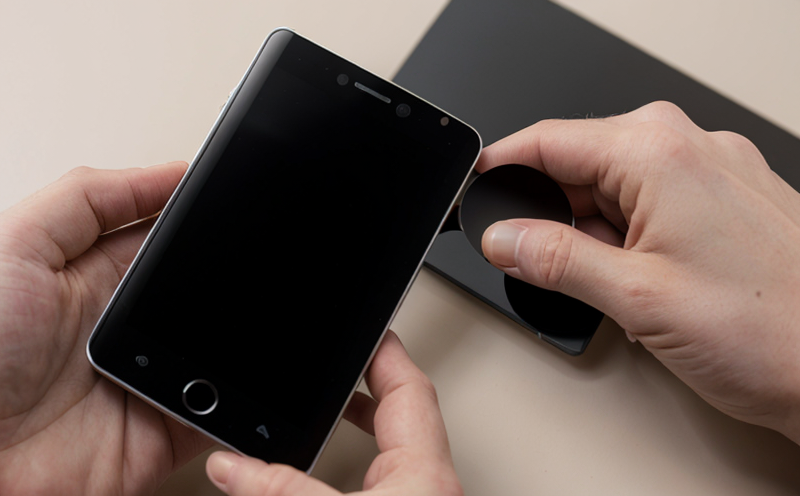ISO 16474 UV Aging Resistance of Thin Film Coatings
The ISO 16474 standard is a critical tool in the evaluation of thin film coatings, particularly those used in nanomaterials applications. This test measures how well these coatings withstand ultraviolet (UV) radiation, which can lead to degradation and loss of performance over time. The standard is widely recognized for its robustness in simulating real-world environmental conditions on a controlled laboratory scale.
Understanding the durability of thin film coatings under UV exposure is essential for industries such as electronics, photovoltaics, and medical devices where materials must maintain their integrity and functionality even after extended periods of outdoor use. By ensuring that these materials meet the stringent requirements set forth by ISO 16474, manufacturers can enhance product reliability and extend shelf life.
Our laboratory offers comprehensive testing services to help companies comply with this standard. Our team is equipped with state-of-the-art equipment capable of replicating various UV exposure conditions. We follow all prescribed procedures meticulously, ensuring accurate results that are reproducible and reliable.
The process begins by preparing the specimens according to ISO 16474 guidelines. Specimens must be mounted in a way that allows for consistent irradiation across their surface area. Once prepared, they undergo UV exposure using specialized chambers designed to deliver precise levels of radiant power over defined durations. During this time, parameters such as temperature and humidity are controlled to simulate specific environmental conditions.
After the prescribed period of UV exposure, specimens are evaluated visually for changes in coloration or texture indicative of degradation. Additionally, instrumental methods like spectrophotometry may be employed to quantify shifts in optical properties. Acceptance criteria vary depending on the intended application but typically involve thresholds related to visual assessment and/or quantitative metrics.
Compliance with ISO 16474 not only enhances product quality but also facilitates market access by ensuring consistent performance across different geographical locations. It provides assurance that products will meet expectations throughout their lifecycle, thereby reducing potential issues downstream such as failures in critical applications or recalls due to substandard materials.
| Applied Standards | - ISO 16474:2015 |
|---|---|
| Other Relevant Standards | - ASTM D1935-18 |
The above table highlights the primary standard applied in our testing process along with another relevant industry guideline. Both standards provide detailed protocols for conducting UV aging tests on thin film coatings, but ISO 16474 tends to focus more broadly on various types of films while ASTM D1935-18 specializes in adhesives and sealants.
Why It Matters
The durability of nanomaterials under UV exposure is crucial for several reasons. In the context of electronics, where circuit boards are often exposed to direct sunlight during installation or use outdoors, it becomes imperative that any thin film coating applied does not degrade over time leading to shorts or other electrical failures.
For photovoltaic cells, which rely heavily on semiconductor materials sensitive to light and heat, ensuring adequate UV resistance prevents performance decline. Degradation in efficiency can significantly impact the overall output of solar panels, affecting both cost-effectiveness and environmental benefits associated with renewable energy sources.
In medical device manufacturing, compliance with ISO 16474 ensures that thin film coatings used in contact lenses or implantable devices remain stable under UV exposure. This stability is vital for maintaining biocompatibility and avoiding adverse reactions within the body.
By adhering to this standard during production processes, manufacturers can demonstrate their commitment to quality control and regulatory compliance. It also serves as a competitive advantage by showcasing superior product performance compared to non-compliant alternatives.
Applied Standards
| Standard | Description |
|---|---|
| ISO 16474:2015 | This international standard specifies the procedure for determining the resistance of thin film coatings to ultraviolet radiation. It covers various types of films including those used in electronics, photovoltaics, and medical devices. |
| ASTM D1935-18 | An American Society for Testing and Materials standard focused on adhesives and sealants, providing additional insights into UV resistance characteristics through specific tests not covered by ISO 16474 alone. |
The combination of these standards ensures a comprehensive approach to evaluating the UV aging resistance of thin film coatings. While ISO 16474 provides broad applicability across multiple industries, ASTM D1935-18 offers specialized knowledge particularly beneficial for adhesive and sealing applications involving UV exposure.
Use Cases and Application Examples
| Application Example | Description |
|---|---|
| Solar Photovoltaic Panels | Thin film coatings on solar cells need to withstand harsh environmental conditions, including prolonged UV exposure. Ensuring they meet ISO 16474 standards helps maintain optimal efficiency and longevity. |
| Contact Lenses | Coatings applied to contact lenses should remain stable under UV light without causing irritation or degradation of the lens material. Compliance with this standard ensures safety and effectiveness for end users. |
| Electronics Encapsulation | Thin films used in encapsulating electronic components must resist UV radiation to prevent circuit failures due to oxidation or other chemical changes. This is especially important for devices exposed to sunlight during use. |
| Medical Implants | The integrity of thin film coatings on medical implants is crucial for long-term performance and biocompatibility. Meeting ISO 16474 requirements helps ensure that these materials do not degrade over time, reducing the risk of complications. |
The examples provided illustrate how compliance with ISO 16474 plays a vital role in ensuring product reliability across diverse industries. By adhering to this standard during development and manufacturing processes, companies can enhance trust among customers while also meeting regulatory requirements.





